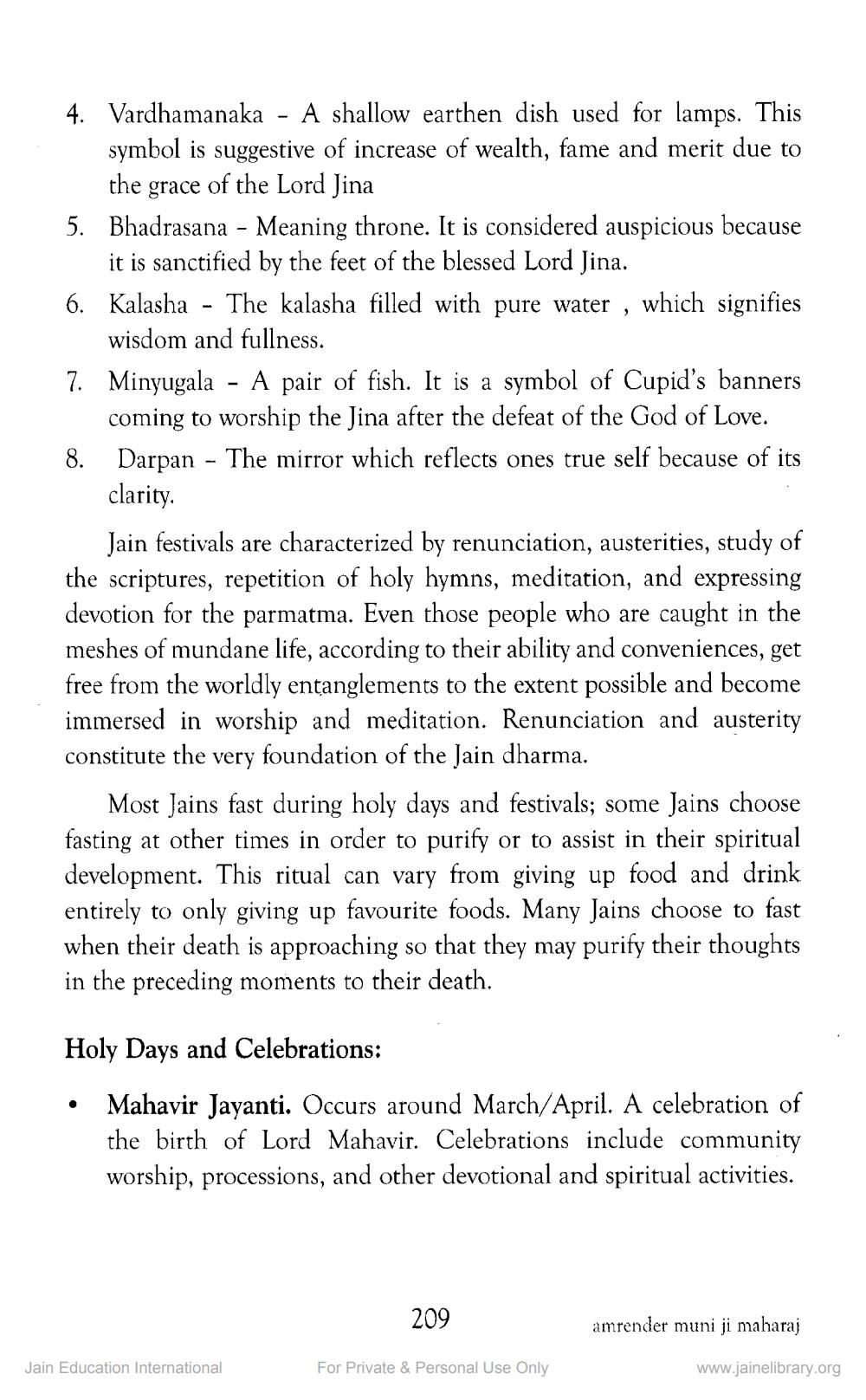________________
4. Vardhamanaka - A shallow earthen dish used for lamps. This
symbol is suggestive of increase of wealth, fame and merit due to
the grace of the Lord Jina 5. Bhadrasana - Meaning throne. It is considered auspicious because
it is sanctified by the feet of the blessed Lord Jina. 6. Kalasha - The kalasha filled with pure water , which signifies
wisdom and fullness. 7. Minyugala - A pair of fish. It is a symbol of Cupid's banners
coming to worship the Jina after the defeat of the God of Love. 8. Darpan - The mirror which reflects ones true self because of its
clarity.
Jain festivals are characterized by renunciation, austerities, study of the scriptures, repetition of holy hymns, meditation, and expressing devotion for the parmatma. Even those people who are caught in the meshes of mundane life, according to their ability and conveniences, get free from the worldly entanglements to the extent possible and become immersed in worship and meditation. Renunciation and austerity constitute the very foundation of the Jain dharma.
Most Jains fast during holy days and festivals; some Jains choose fasting at other times in order to purify or to assist in their spiritual development. This ritual can vary from giving up food and drink entirely to only giving up favourite foods. Many Jains choose to fast when their death is approaching so that they may purify their thoughts in the preceding moments to their death.
Holy Days and Celebrations: • Mahavir Jayanti. Occurs around March/April. A celebration of
the birth of Lord Mahavir. Celebrations include community worship, processions, and other devotional and spiritual activities.
209
amrender muni ji maharaj
Jain Education International
For Private & Personal Use Only
www.jainelibrary.org




